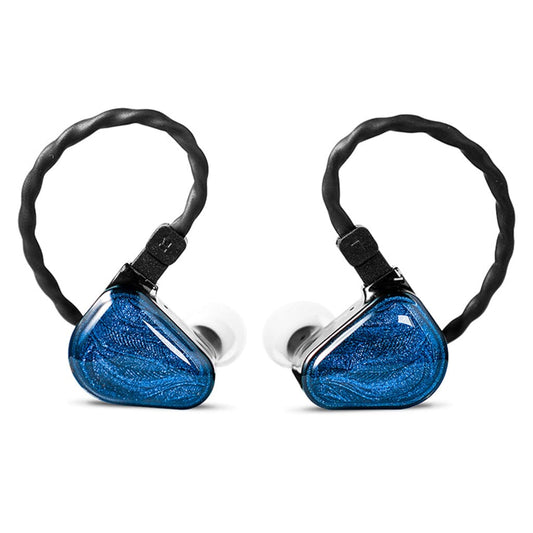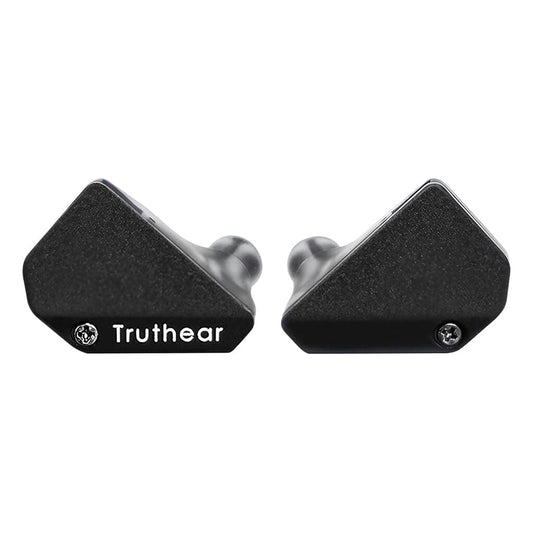Truthear x Crinacle Zero Review: Harman Tuning for $50?

Introduction
The Zero is the latest ware to join IEM reviewer Crinacle's growing repertoire of collaboration IEMs. However, whereas he has usually partnered with established brands (eg. Moondrop, Fiio, and SeeAudio), the Zero hails from a brand out of left field: Truthear. With, well, zero track record from Truthear, the main selling point of the Zero is that it looks excellent on paper. It's a $50, double-DD IEM with a true crossover, and the measurements look like an objectivist's dream (read: it's tuned to Harman). But as we all know, paper is not practice. And in usual fashion, I'll be taking a look at whether the Zero lives up to the lofty expectations set by the inevitable hype train presently stirring. Read on to find out.
Unit was kindly provided for review by Shenzhen Audio and can be purchased here. As always, what follows are my honest thoughts and opinions to the best of my ability.
Source and Drivability
All critical listening was done off an iBasso DX300 and iPhone 13 Mini using lossless files. The stock silicone ear tips and cable were used. The Zero takes a moderate amount of power to drive, but I had no trouble getting to my normal listening volumes (~70dB) on either source I used. If you'd like to learn more about my listening methodology, test tracks, and general beliefs in audio, then I would encourage you to check out this page.
In-the-Box

The Zero arrives in visually distinctive packaging that features an anime bunny girl on the front. Love it or hate it, this type of aesthetic clearly has a sizeable market (something about a positive correlation between audiophiles and anime aficionados comes to mind) and it's selling. Or maybe Truthear and Crinacle are just filthy weebs. But I digress. On the back of the Zero's packaging, you'll find the frequency response graph and the usual specifications. The frequency response measurement - and the accompanying rig it was taken on - is certainly a nice touch, and something I'd like to see more manufacturers showing in the interest of transparency. Popping open the packaging, you'll find the following:
- 6x pairs of silicone ear tips s/m/l
- 1x pair of foam tips (m?)
- Carrying pouch
- 2-pin 0.78mm cable

I'd say this is a pretty solid assortment of accessories; most everything you'd expect for $50. That said, I found the quality of the included carry pouch to be middling. It came with a chemical-like smell and the protection it actually affords the Zero is more minimal. The Zero's cable falls in the same vein; it feels pretty cheap but gets the job done.
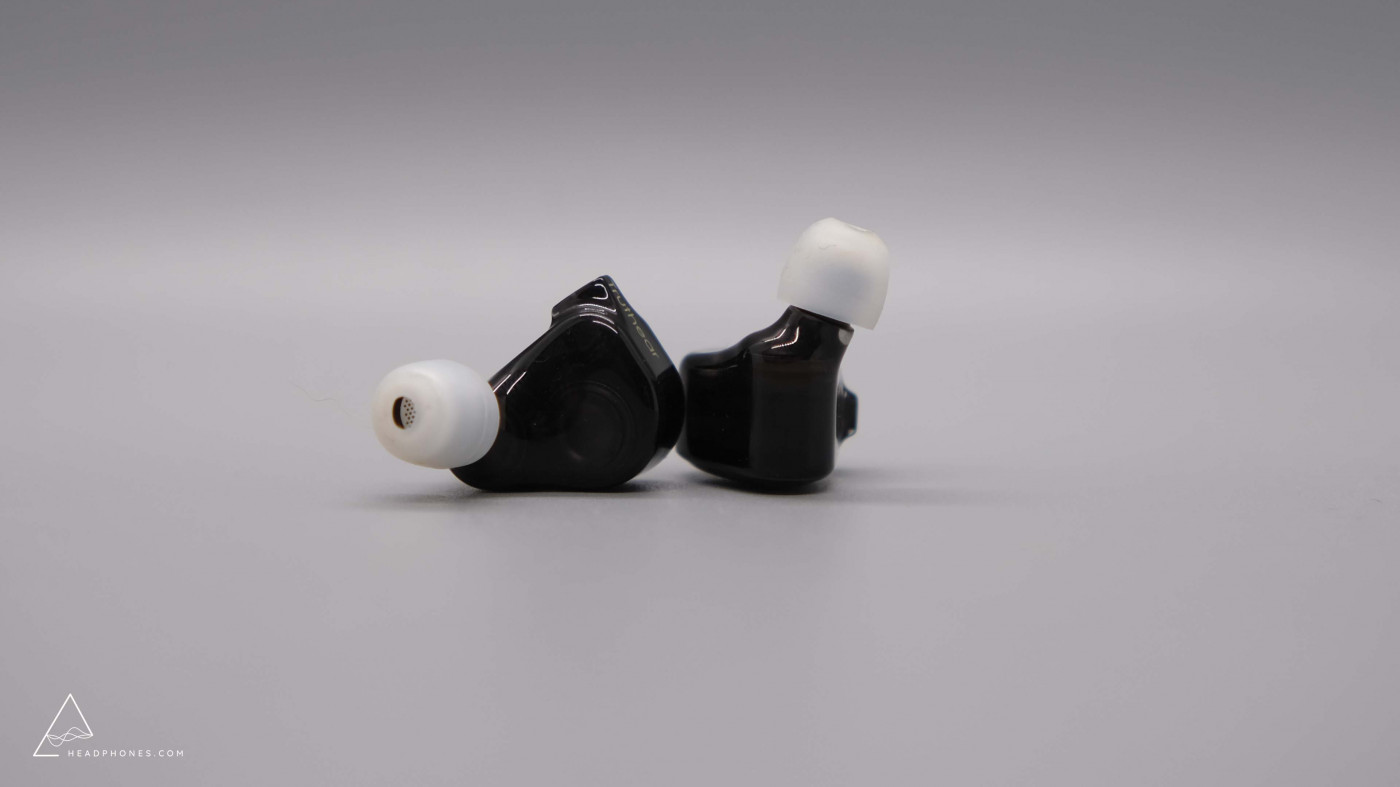
The Zero itself has a triangular design (akin to the Tanchjim Hana 2021, just of a larger size) and is composed of resin. If you look closely, the resin is slightly transparent and you can see the driver configuration inside. One of the DDs is unconventionally placed near the nozzle of the IEM. This is because it's only handling the midrange frequencies and up, as opposed to most DDs which are full-range and which would be inserted closer to the center of the IEM. The Zero's faceplate is a subtle, but slightly sparkly swirl of purple and blue colors. I had no issues with fit and was able to wear the Zero for several hours comfortably. As usual, your mileage might vary as fit is subjective to the user.
Sound Analysis
The frequency response below was taken off an IEC-711 clone coupler. There is a resonance peak at 8kHz. As such, measurements after this point should not be considered entirely accurate. You can compare the Zero to other IEMs that I have measured here.
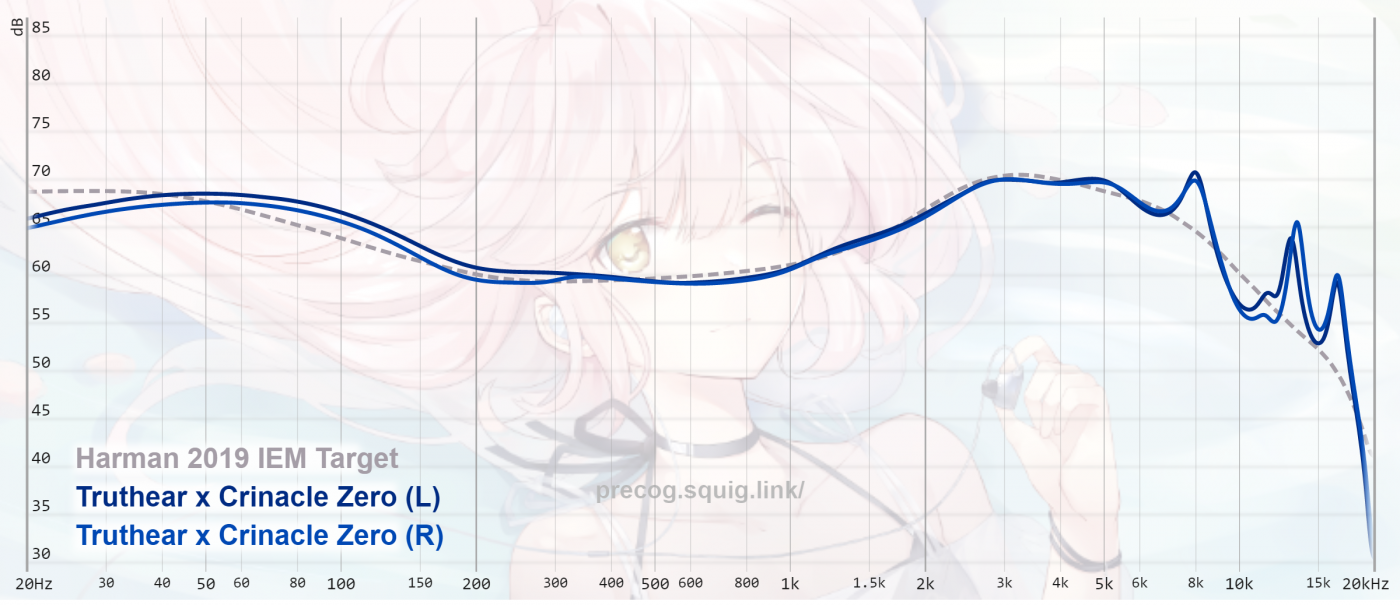
The Zero more or less illustrates some of my praises of, and my reservations with, the Harman in-ear target. Incidentally, there is a common misconception that the Harman target is an interpretation of "neutral" or "balanced" tuning, when this is not the case. It is an aggregate target that is intended to reflect what sounds most pleasing to the majority of listeners. That in mind, I actually hear the Zero's presentation as coming across as mildly V-shaped. It's decently fun, decently balanced, but also not quite there in the tuning department for my preferences.
Starting from the bottom, this is the Zero's calling card: there are few IEMs at this price point with a bass shelf as impactful yet adequately controlled. Regarding the minor sub-bass roll-off observed under ~30Hz, this is mostly a non-issue in practice. In fact, it's rare for me to hear an IEM that does not extend adequately, and it should be noted that most music does not even token lower than 30Hz. I mostly hear this roll-off as subtly increasing perception of the 60-100Hz frequencies. This makes the Zero's bass sound inflated and slightly dampened for a sense of leading slam; it's a more impactful bass response where it sounds like air is being pushed. Basslines on the Zero are also somewhat messy to me (it sounds like kick drums with a longer decay bloom into one another), likely partially due to the absence of the characteristic 200Hz notch seen on the Harman over-ear target. Still, I'd say this is decent bass overall for $50; it sounds like an average DD with a good tuning.
Moving upwards, the Zero adheres more closely to the Harman in-ear target. Unfortunately, this is also where my main issues with the target actually crop up. The target has slightly too much presence in the 3-4kHz region for my HRTF, begetting a sense of forwardness to female vocals. The subsequent lack of energy to the upper-treble lends to a gritty decay which is made more apparent by said forwardness in the upper-midrange. This is basically the effect that I hear going on with the Zero. Female vocal are slightly too shouty, too raspy for my tastes (and yes, here, the lack of upper-treble does affect the timbre of vocals). Interestingly, I find some male vocals on the Zero are a hair thicker than my neutral, perhaps a product of the emphasis at ~100Hz.
The Zero's lower-treble falls into the same vein of "slightly excessive" as the upper-midrange; it can be intensive and somewhat clack-y. Taking the Zero's sound as a whole, it doesn't work as well with tracks like Brett Young's "Here Tonight" where you have a combination of kick drums, electric guitars, and cymbals crashing. It all just starts becoming a blurred cacophony of too much crunch, too much reverb, and not enough staging. The treble issues also become more apparent on brighter sections of tracks that don't have a bassline to balance out the 5kHz emphasis; of course, this perception is exacerbated by the lack of air over 10kHz.
Technical Performance
As one might imagine, I find the Zero's sense of technicalities to be mostly average. It has a sizeable amount of texture - the aforementioned grit - to note decay, but it delves into the "dirty" territory that I often associate with a lack of treble extension. Imaging on the Zero is average with, to reiterate, instruments on more complex tracks blooming into one another especially in the bass, thus obscuring a sense of space to staging. Dynamics are respectable enough for an IEM at $50; it sounds like it pushes air nicely for such a cheap IEM. I want to emphasize that most of these issues are par for the course at this price point. In fact, at $50, I'd suggest that being average in the technical department is almost desirable relative to the competition.
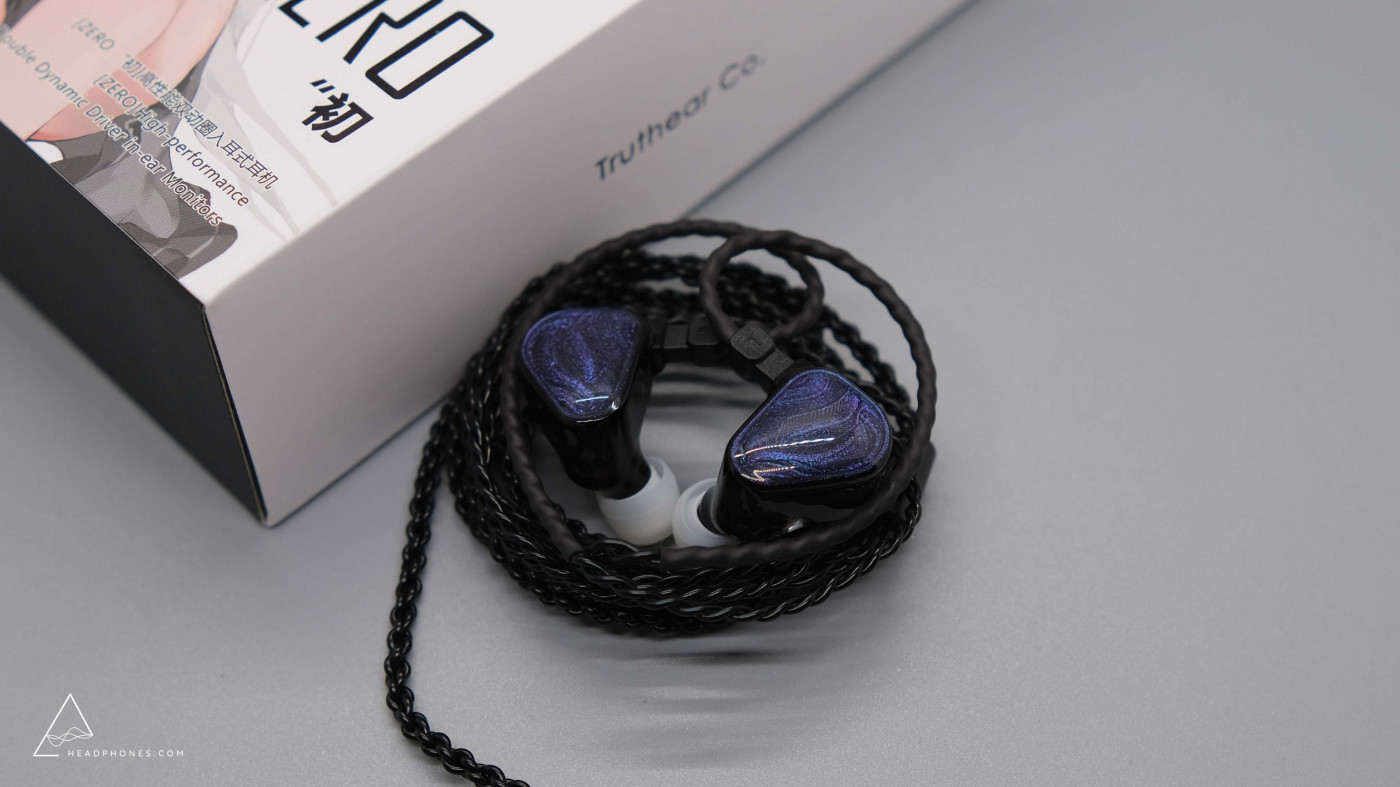
Comparisons
But let's take a look at some of the not-so-average competition.
CCA CRA+: The Zero doesn't touch the CRA+ for the CRA+'s sense of clarity and treble extension. But the Zero's bass is more focused, impactful and the general frequency response is more palatable. To me, it's mostly the difference of one IEM, the CRA+, being more exciting but also sounding more unnatural. The Zero will appeal to listeners who want something with more correct timbre.
Moondrop Chu: I can definitely see listeners who want a leaner and brighter sound preferring the Chu; however, I'm much more of the bass-y and exciting persuasion. This means that I don't like the Chu very much even if it might be a solid IEM on paper. I think the most apt way of summarizing it for potential listeners is with the question, "Do you like bass?". If you do, you're going to want the Zero. If not, or you're agnostic on bass, then it could be more of a toss-up between the IEMs.
Moondrop KXXS: Unfortunately, I do not have an Aria for comparison, but the KXXS is almost identical for most intents and purposes. Interestingly, the Zero is very similar to the KXXS in terms of tuning. I think the main difference, to me, is that the KXXS' tuning is just a bit more refined here and there. It has a really pleasing, natural timbre, and a slightly splashy, musical quality to its treble response that stems from a 14kHz resonance. The Zero is possibly more exciting, especially in the bass, but it's not an IEM that I would be keen to listen to for hours on end like the KXXS. I would say that technicalities on the KXXS are also a small step ahead of the Zero. These are more or less the same distinctions I observe with the Zero versus other popular single-DD benchmarks like the Tripowin Olina and Dunu Titan S.
Samsung Galaxy Buds: Technically these are discontinued, but I have seen them go as low as ~$50 on eBay and they're tuned very similarly to the Harman target. In fact, I would say that they're tuned even better. The bass response on the Galaxy Buds doesn't have the slight bass bloat I observe on the Zero, and it's upper-midrange and treble tuning are generally smoother to my ears. It's a similar story for technicalities where I find it to be a hair more refined despite it being a TWS.
Tripowin Mele: I don't have this one on hand for A/B, but if memory serves correctly, the Zero can be considered a solid step ahead of the Mele unless you're someone who actually likes a dark and somewhat muddy sound.
The Bottom Line
Okay, I should answer the question you're probably really wondering about: should I buy the Zero? If you're someone who goes by the measurements, then I think so. But even if you're someone who doesn't index as heavily for measurements, I'd stand by the Zero being a solid buy at $50 despite the nitpicks I've outlined. I've really been assessing the Zero more critically than I would most $50 IEMs (you don't see me go this in-depth on budget IEMs usually) and that's mainly because, well, it's actually good. If something is mediocre, I don't really have much to say about it which isn't the case here. In any event, I think this is a solid first entry by Truthear and I'd like to see what they cook up to tackle the upper echelons of the market.
